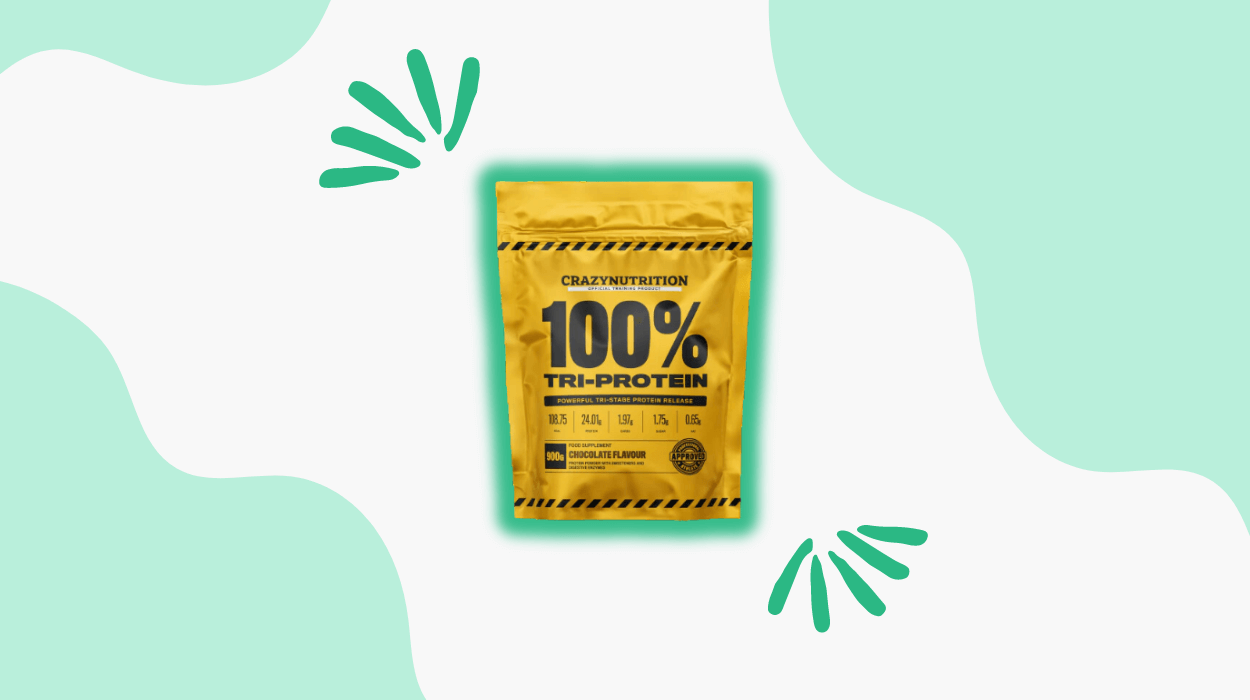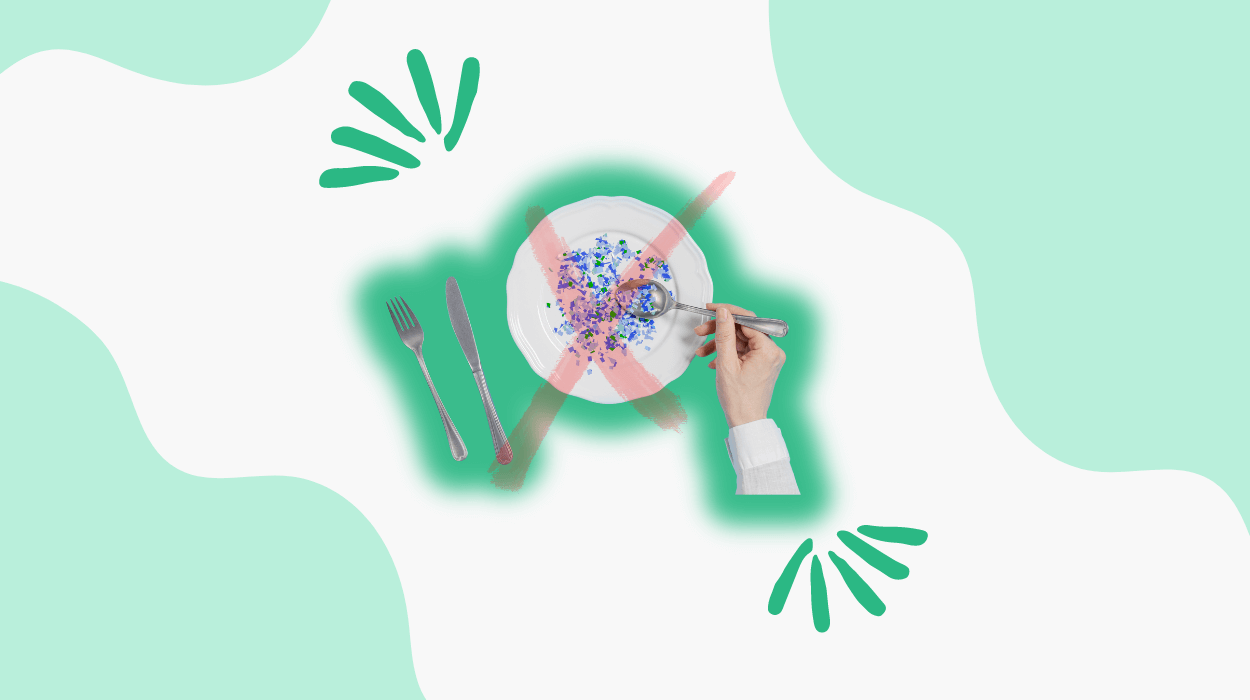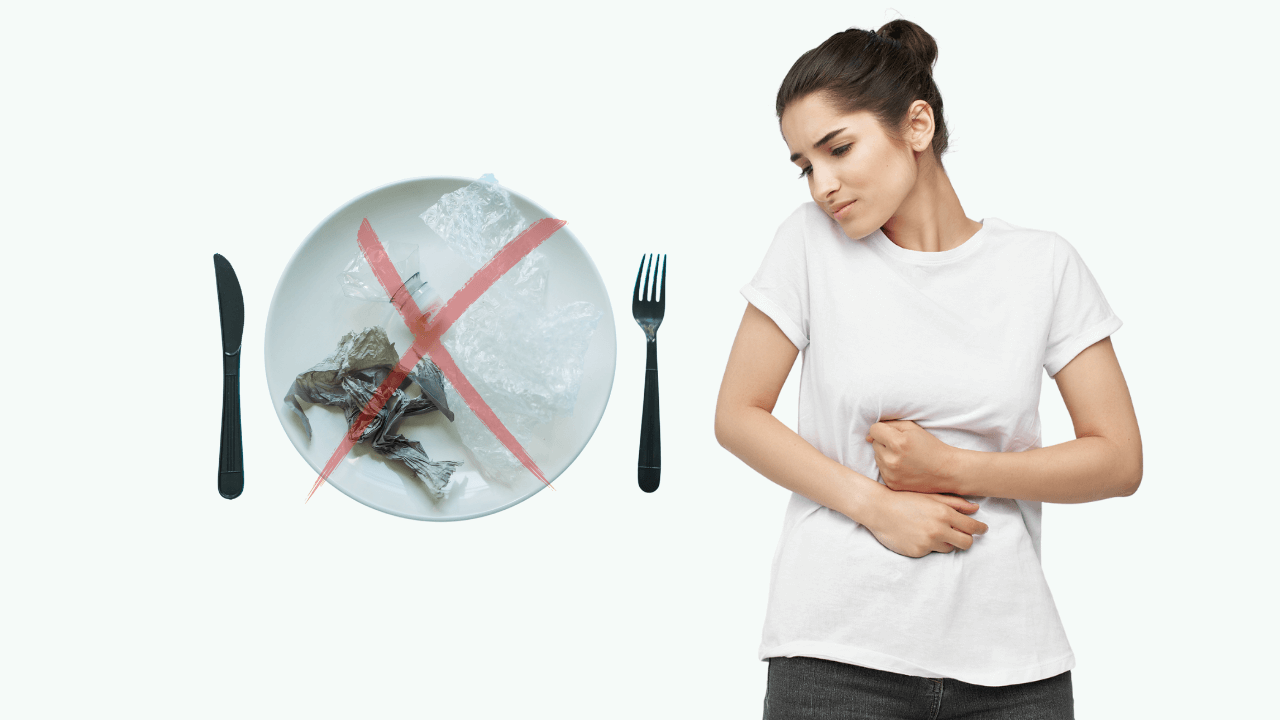

Plastic pollution has become widespread, infiltrating food and water sources and subsequently entering the human body as microplastics. Microplastics are tiny fragments of plastic resulting from the breakdown of larger plastics or commercial product development.
It has become challenging to avoid microplastics, as they have become an inseparable part of your daily lives. The packaging materials used in store-bought goods, the plates you eat on, the toys for your kids, the fiber of your clothing, and so much more are made of plastics.
These plastics contain harmful compounds such as phthalates, tetrabromobisphenol A, or polybrominated diphenyl ethers.
When microplastics are ingested, these chemicals leach into the body. They may induce health risks like organ dysfunction, DNA damage, or neurotoxicity.
There are some simple measures that could reduce your risk of microplastic exposure. Let’s look at these evidence-based measures, including the impact of plastics on the body and the health benefits of a plastic detox.
Microplastics are minute plastic particles (smaller than five millimeters in size) that may thrive in various environments, including water, soil, and air.
There are two types of microplastics:
Research has shown that humans ingest between 0.1–5 grams of microplastics every week, which can be found in human lungs and blood. These particles have been linked to respiratory symptoms, diseases, and immune reactions.
Sources of microplastic ingestion could include:

Plastic containers and utensils could release chemicals like BPA, which disrupt hormone balance and cause health issues like chronic diseases.
Dishwashing items such as sponges and brushes made of plastic also release significant amounts of microplastics. You may unknowingly consume these microplastics as they tend to stick to your tableware.
It is essential to transform your kitchen space by replacing plastic containers, bakeware, and dishwashing items with safer, natural alternatives. Doing so may help limit exposure to harmful chemicals and microplastics in your kitchen.
Try replacing plastic containers with glass or stainless steel options, which do not release harmful chemicals or microplastics. Similarly, opt for ceramic or cast iron bakeware instead of plastic. For dishwashing items, choose natural kitchen brushes and loofah sponges.
Many canned foods are lined with plastic coatings like bisphenol A (BPA) to prevent contamination and corrosion. However, these linings may leach harmful chemicals into the food, especially when exposed to acid or heat.
Glass does not contain plastic linings and is a safer substitute for canned foods with plastic coatings. You could minimize BPA exposure by opting for products that come in glass containers.
If glass-packaged options are unavailable, check the product label for information on the lining used. Avoid producers that use BPA or other harmful chemicals in their can linings.
You could minimize your exposure to plastics by emphasizing fresh, whole foods. Choose fruits, vegetables, grains, and proteins not packaged in cans whenever possible.
Plastic containers, plastic bottles, or carry bags often contain single-use plastics with chemical additives like phthalates and endocrine disruptors. Repeated exposure to these chemicals may cause health issues, such as immune dysfunction and hormonal imbalance.
Keeping a reusable bag or backpack near the door may ensure you always have a sustainable option for carrying your groceries. Swap out plastic bottles with glass bottles to reduce exposure to single-use plastics.
Instead of purchasing pre-packaged meat or fish, choose the fresh options available at the counter. If you struggle to find specific items without plastic packaging, consider visiting bulk stores and markets, as they might provide sustainable packaging.
A diet free from plastic and rich in nutritious, natural foods may support the body’s natural detoxification processes and promote overall health.
Choose fresh fruits and vegetables that are free from plastic packaging. Opt for organic food options whenever possible, as they are less exposed to industrial fertilizers that may contain microplastics.
Seafoods like clams, mussels, oysters, and scallops may contain higher levels of microplastics. Consider opting for low-risk seafood options such as wild-caught salmon or sardines that contain comparatively lower or negligible levels of microplastics.
Consume fiber-rich foods like flaxseeds, chia, broccoli, and asparagus. These high-fiber options may aid toxin elimination by supporting regular bowel movements. Drinking at least eight to nine glasses of water daily is crucial for flushing out toxins from the body, including microplastics.
Many takeout meals are packed in plastic containers made of Styrofoam. When exposed to heat and fat, these plastic containers may release increased amounts of microplastics and chemicals.
Avoiding plastic takeouts and opting for alternative options may minimize your exposure to these harmful substances.
Here are some practical strategies to avoid plastic takeout:
Plastic water bottles are a major contributor to microplastic contamination. Research suggests that around 93% of bottled water contains microplastics, with every liter containing ten microplastic particles.
Switching to tap water could be a better alternative, as it is often healthier and more regulated. Using a water filtration system (specifically mentioning microplastic removal) might remove or reduce the presence of microplastics and other contaminants in your drinking water.
However, some water filtration plants may not be able to effectively remove microplastics, leading to their presence in tap water. Researching your water source may help you make informed decisions about filtration options.
Many personal care products and cosmetics contain microplastics, such as facial scrubs and toothpaste. A research study found that 50% of sampled toothpastes contained microplastics.
These microplastics are intentionally added by manufacturers for abrasion or texture purposes. You may look for the “Zero Plastic Inside” logo and search publicly available information to identify plastic-free options.
Consider using products like toothpaste tablets and solid body wash- and shampoo, which are guaranteed plastic-free. Opting for plastic-free personal care products may contribute to a healthier environment and reduce the risks associated with microplastic ingestion.
When swallowed or ingested, microplastics may disrupt your body’s natural functions. Larger pieces of plastics may be eliminated through fecal matter. However, sometimes they remain in the stomach and cause potential digestive issues (diarrhea, vomiting, or abdominal pain).
Microplastic ingestion may increase the risk of chemical poisoning. They contain chemicals like bisphenol A, which may leach into the body and interfere with hormonal balance. Such effects might lead to reproductive issues, hormone disruption, and chronic diseases.
Plastics may serve as a breeding ground for microorganisms. When ingested, plastics with a higher microorganism concentration could induce health issues such as endocrine disorders, metabolic dysfunction, or toxicity.
Reducing your exposure to plastic could protect you from ingesting harmful chemicals and support your body’s natural detoxification processes. It may also contribute to reducing plastic pollution and its devastating effects on ecosystems and wildlife.
Research indicates that certain plastic chemicals, like endocrine disruptors and phthalates, could impair metabolism and fat storage. These effects may potentially contribute to weight gain and obesity.
Polychlorinated biphenyls (PCBs) in microplastics could negatively impact your thyroid function, which may disrupt metabolic processes and induce weight gain.
Bisphenol A (BPA) may impact hormone regulation and metabolism, increasing fat accumulation and weight gain.
Therefore, minimizing your exposure to microplastics could help support a healthy metabolism and mitigate the risk of experiencing weight gain.
A healthy gut microbiome contains bacteria and microbes that aid digestion and help fend off gut infections. The leakage of microplastics in the gut could trigger gut microbiome imbalances and alter intestinal permeability, negatively impacting digestive function.
Prioritizing natural, organic foods over plastic-packaged alternatives may provide essential nutrients and fiber that support efficient digestion. Increasing fiber intake and staying hydrated may also improve gut health and functioning.
Plastics contain harmful compounds that could disrupt the endocrine system functioning and lead to hormone imbalances. A plastic detox might restore hormonal balance and reduce the risk of endocrine-related disorders.
Hormonal imbalances caused by plastic exposure may raise your likelihood of developing chronic diseases like obesity, diabetes, and certain cancers. Plastic detoxification may restore hormonal balance, reducing the risk of these diseases.
Chemicals found in plastics might interfere with reproductive hormones, leading to fertility issues and reproductive disorders. A plastic detox might reduce hormonal imbalances and improve reproductive health.
Improper disposal and inadequate recycling of plastic waste may lead to its accumulation in landfills, oceans, and ecosystems. It poses a significant health risk to marine biodiversity and wildlife.
Plastic pollution has a detrimental impact on ecosystems. It disrupts food chains, damages habitats, and harms biodiversity. Reducing reliance on plastics may safeguard the planet’s biodiversity and ensure sustainability.
Plastic production and incineration contribute to greenhouse gas emissions, exacerbating climate change. Reducing plastic consumption might help mitigate these emissions and work towards a more sustainable and resilient future.
When your body is burdened by toxins such as BPA and phthalates, it could decrease energy levels and induce feelings of fatigue. Detoxifying from plastics may restore hormonal balance that could mitigate fatigue, boost energy, and enhance stamina.
Regular physical activity may induce sweating, aiding toxin elimination through perspiration. Doing deep breathing exercises may help flush out toxins from the respiratory system, improving overall respiratory health.
Adhering to a plastic detox may benefit those with underlying hormonal conditions, pregnant women, children, environmentalists, or those striving to reduce their carbon footprint.
Pregnant women and children are more vulnerable to microplastic exposure and their side effects. They could protect their health by undergoing a plastic detox.
Environmentalists who care about life and ecosystems could witness the positive impact of reducing plastic use on biodiversity and the health of the oceans.
Those seeking to reduce their carbon footprints and support eco-conscious practices may find that a plastic detox aligns with their lifestyle choices.
The world is surrounded by plastic-based products like bottles, containers, and packaging products. However, the presence of microplastics in human breast milk may signal the need to follow a plastic detox to ensure overall health and well-being.
Adopt strategies like using natural fibers instead of synthetic materials, cutting down on single-use plastic items, and preferring fresh, natural foods over packaged ones. These practices may help minimize your exposure to microplastics.
Proper waste disposal practices, drinking filtered tap water, and regularly dusting and vacuuming are additional measures to prevent microplastic exposure.
Tyler Read earned an undergraduate academic degree from Sonoma State University, California and is a certified personal trainer (CPT) with NASM (National Academy of Sports Medicine). With over 16 years of experience, Tyler has trained clients both online and in-person.
He is passionate about helping others turn their love for fitness into a career. Tyler has worked with many local and commercial gyms before establishing his successful private personal training business, which he continues to operate.
